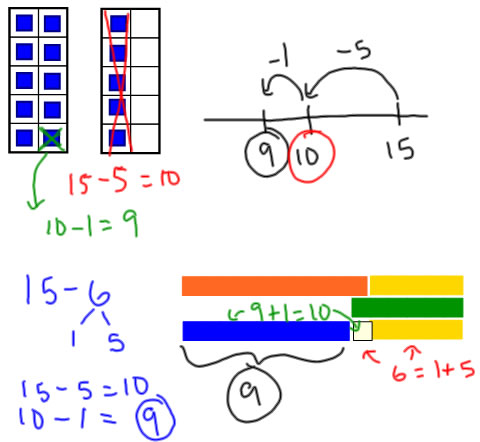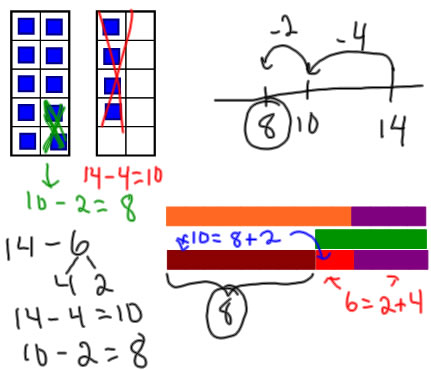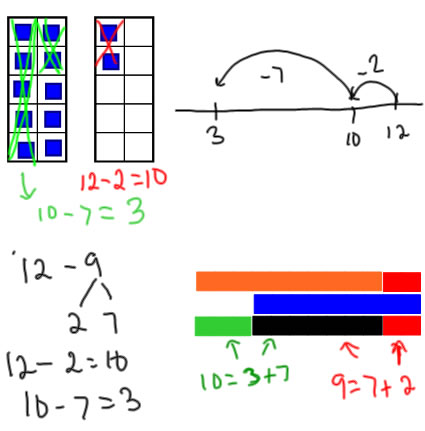15-6
We can represent the thinking in backing down through 10 using several different materials:
With 10-frames, we begin with the minuend (15) and proceed to take away 6 by first taking away all of the counters on the right 10-frame, and then taking away one more counter on the left 10 frame (the answer is the remaining number of counters)
On the open number line, you can see that what we are doing is starting with the minuend (15) and taking away enough to get down to 10. Then we compare that to the subtrahend and figure out how many more we need to take away/count down so that we have taken away a total of 6.
Numerically, we break the subtrahend (6) down into the amount in the ones digit of the minuend (5) and some more (1), so 6 is made of the parts 5 and 1. If we take away first 5 from 15, we get 10, and then the remaining amount (1) from 10, we get 9. Notice that the steps of subtracting to reach 10, and subtracting the rest from 10 get their own separate number sentences.
The Cuisenaire rod process is a lot like the number process. We first break down 6 into 1 and 5, and then we break 10 into 9 and 1, so that we see that the missing part is 9.

14 - 6 is another problem that backing down through 10 is a good strategy for.
Removing the 4 counters from the right 10-frame leaves 10, and removing 2 more counters (6 total) leaves 10-2=8.
Subtracting 4 from 14 on the number line takes us to 10. We still need to take away 6-4 =2 more, so that gets to the answer of 8.
Numerically, we need to know that 6 can be decomposed into 4+2. After taking 14-4=10, we still need to take away 2 more, and 10-2=8.
With the Cuisenaire rods, we line up to show that 6=2+4 and that 10=8+2. Thus, 14 splits into sets of 6 and 8: 14-6=8.

